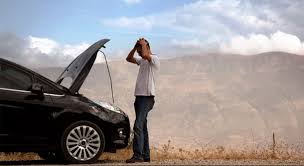Each year, approximately
1,800 children who are less than 14 years of age lose their lives as the result
of a motor vehicle crash. Another 280,000 children are injured. Child safety
seats, when properly installed, save lives. A study released by the National
Safe Kids Campaign, however, reports that at least 85 percent of the 17,500
seats inspected were installed incorrectly. The most common misuses were the
safety belt not holding the seat tightly and harness straps not being used
properly.
Arizona Law Regarding Child Car Seats
ARS 28-907 (A) and (B): A
person shall not operate a motor vehicle on the highways in this state when
transporting a child who is under five years of age unless that child is
properly secured in a child restraint system. Each passenger who is at least
five years of age, who is under eight years of age and who is not more than
four feet nine inches tall is to be restrained in a child restraint system.
A
person shall not operate a motor vehicle on the highways in this state when
transporting a child who is under five years of age unless that child is
properly secured in a child restraint system. Each passenger who is at least
five years of age, who is under eight years of age and who is not more than
four feet nine inches tall is to be restrained in a child restraint system.
Everything becomes a missile in a crash. This
means anything that is not secured will fly around the inside of the vehicle.
Anything that you don’t want hitting you or your child should be safely put
away. Here are tips to make sure your is installed correctly:
1.
Use the owner’s
manuals for the seat AND the vehicle to select safest position and installation
method.
2.
Ensure the seatbelt or
LATCH (Lower Anchors and Tethers for CHildren) straps are going through the
seat at the correct slots for the position the seat is facing.
3.
If using LATCH, check
the vehicle owner’s manual to make sure that LATCH can be used in the seating
position you have chosen. (Center is safest for your child to ride. However,
many manufacturers do not allow LATCH to be used in that location. The seat
belt would be used instead.)
4.
The seat should not
move more than an inch from side-to-side at the belt path (where the LATCH or
seat belt straps are go through the seat.) A grip liner can be used to help
reduce any movement on slick surfaces.
5.
Ensure the seat belt
or LATCH straps are not twisted.
6.
The seat should be at
a 45 degree angle when the seat is rear-facing. Most infant seats are designed
to allow you to adjust the angle. Otherwise, use rolled up towels, or pool
noodles to help maintain the angle. Forward facing seats are kept straight.
7.
Use the tether strap
to secure the seat at the top when forward-facing. This helps reduce forward
head movement by 6 inches.
8.
Harness straps hold
the child in the seat. They should be snug and should not be twisted.
9.
The harness clip
should be kept at armpit level.
10. No after-market
products should be used on the seat. This includes toys on the carrying
arm and anything that goes behind the baby in the seat. If it didn’t come
with the seat, do not use it.
11. The carrying arm
should be kept in the back position while in the vehicle. This will allow
the seat to react properly in a crash.
The City of Scottsdale
Public Safety personnel provide car seat inspections by appointment. Please click on http://www.scottsdaleaz.gov/fire/car-seat-inspections
to schedule your appointment.























